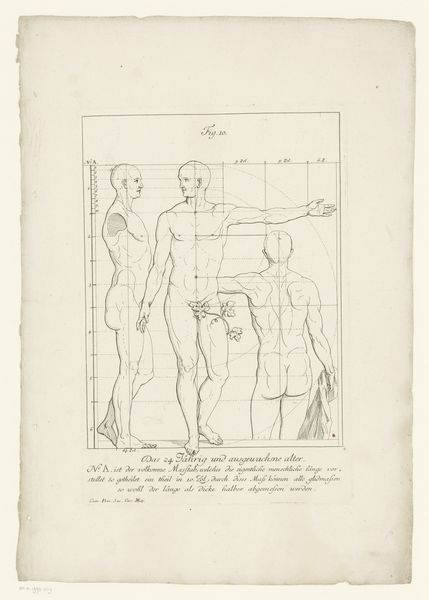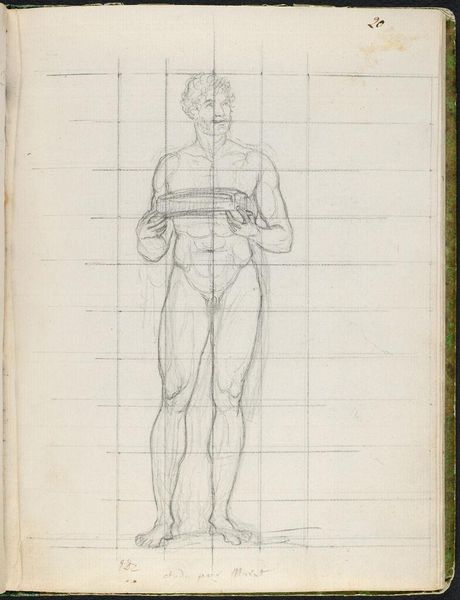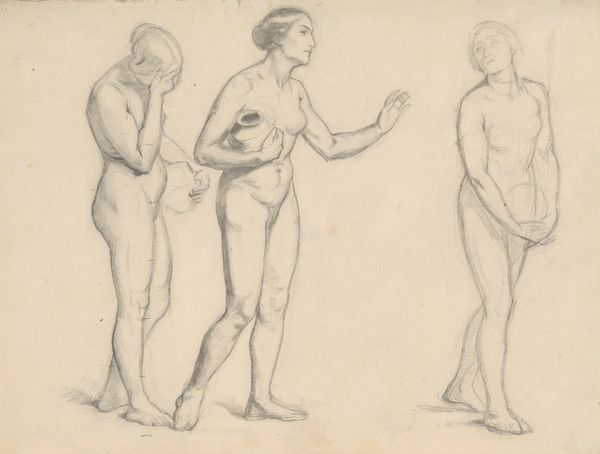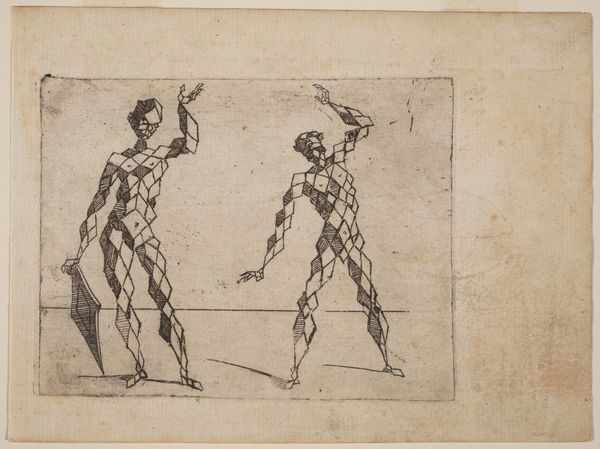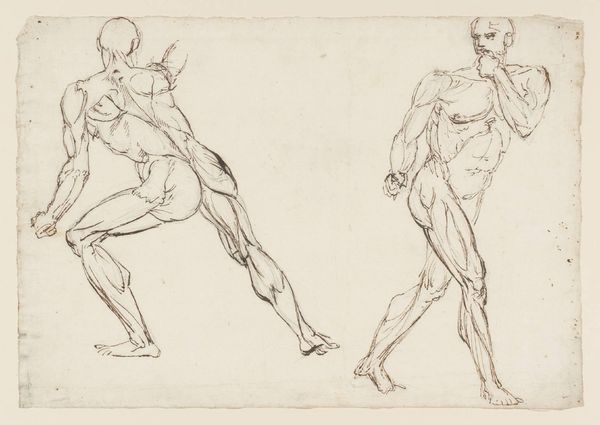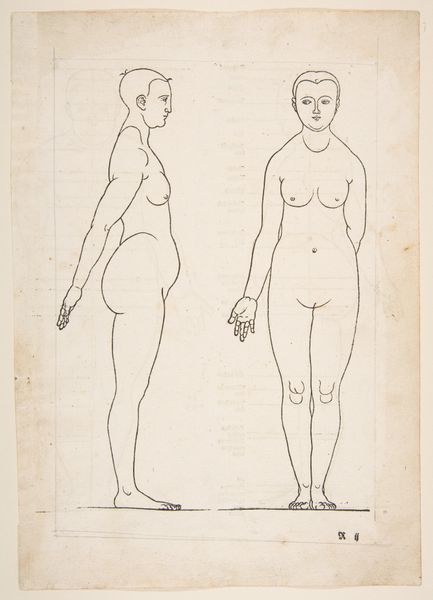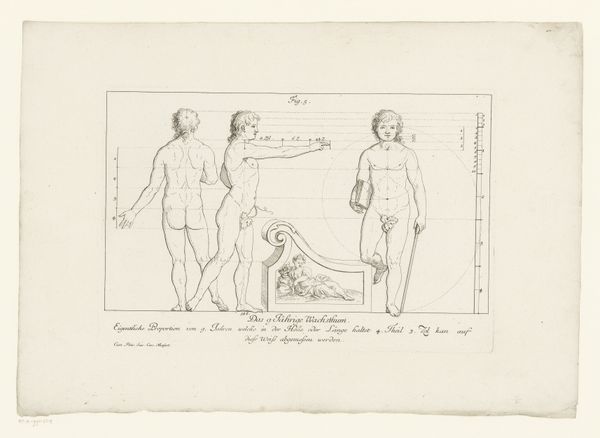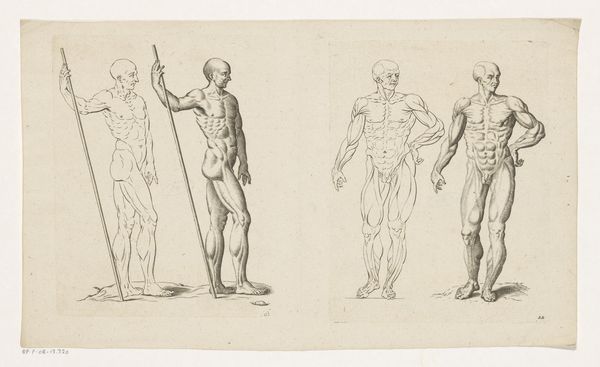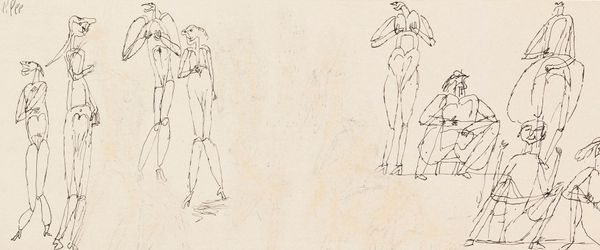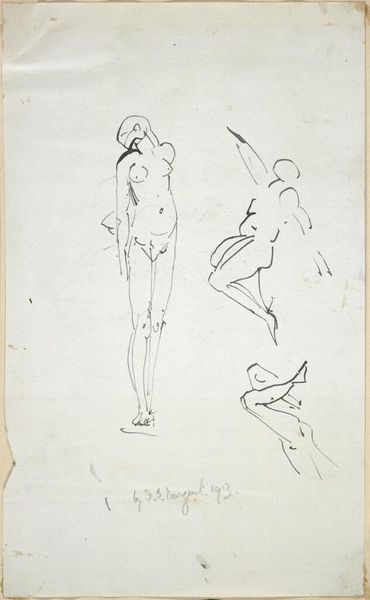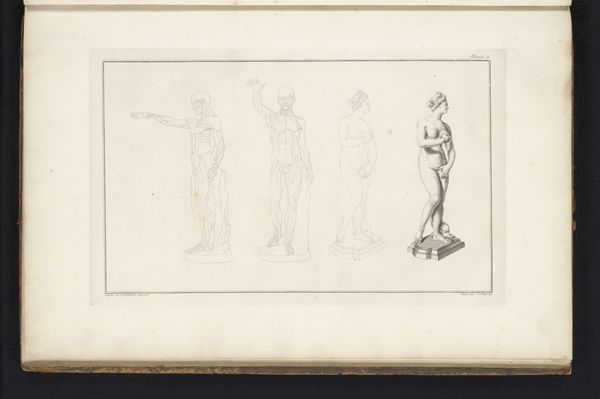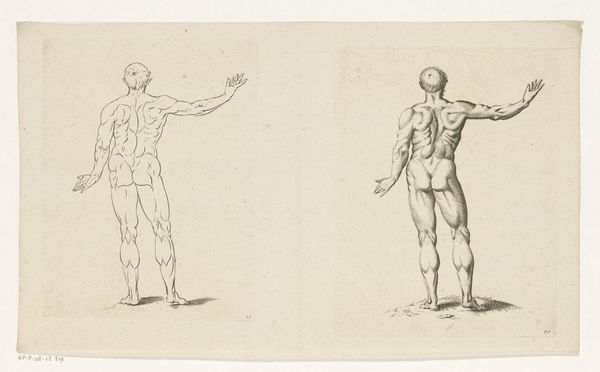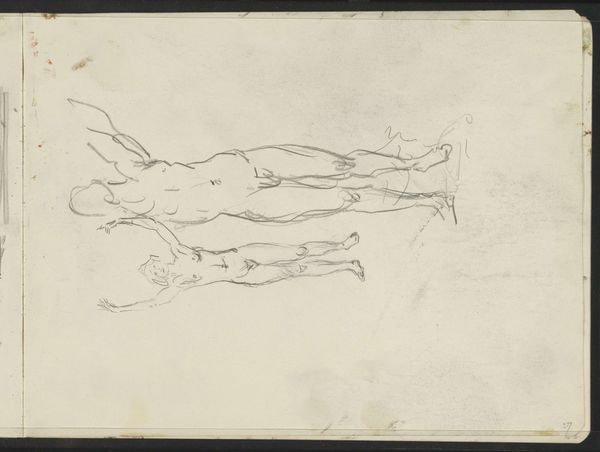
drawing, paper, pen
#
portrait
#
drawing
#
figuration
#
paper
#
form
#
line
#
pen
#
history-painting
#
academic-art
#
modernism
Copyright: Public Domain: Artvee
Editor: So, we're looking at "Studies of Anatomy, Measurements and Writing" a pen drawing on paper. It looks like it’s from the Modernism movement by James Ward. It’s really intriguing how he's mapped out these human figures, almost like architectural blueprints. What do you see in this piece, beyond just anatomical studies? Curator: It is fascinating, isn't it? To me, it speaks volumes about the societal obsession with codifying and controlling the human form. Look at the measurements, the almost scientific breakdown of the body into "heads." Who gets to decide these proportions? How do these ideals impact marginalized bodies that inevitably fall outside of those restrictive parameters? And consider how the artist employs writing – it reinforces the supposed authority and "objectivity" of the anatomical study, while perhaps subtly hinting at the arbitrary nature of these proportions. Editor: That's a perspective I hadn't considered. It’s like the drawing isn't just about understanding anatomy, but also about power dynamics? Curator: Precisely. Consider how often art has been used to enforce social norms around beauty and the body. This piece might be an attempt to engage with those historical and contemporary power structures. How do these constructed proportions and aesthetic values impact individuals' sense of identity and belonging? Think about feminist theory and its critique of the male gaze or critical race theory that analyses the marginalisation and pathologisation of non-white bodies. Editor: It's making me rethink the intent behind such "objective" studies. I was focusing on the artistry, the linework. I now see it goes much further. Curator: Art never exists in a vacuum. The lines themselves are imbued with the history of those that drew them, as well as what/who the artist omitted. Editor: This has definitely opened my eyes to how much context shapes our interpretation. Thanks! Curator: And thank you for your insight and engagement. Thinking about art in this way helps us unpack complex power dynamics and encourages crucial conversations around identity, representation, and the social impact of visual culture.
Comments
No comments
Be the first to comment and join the conversation on the ultimate creative platform.
